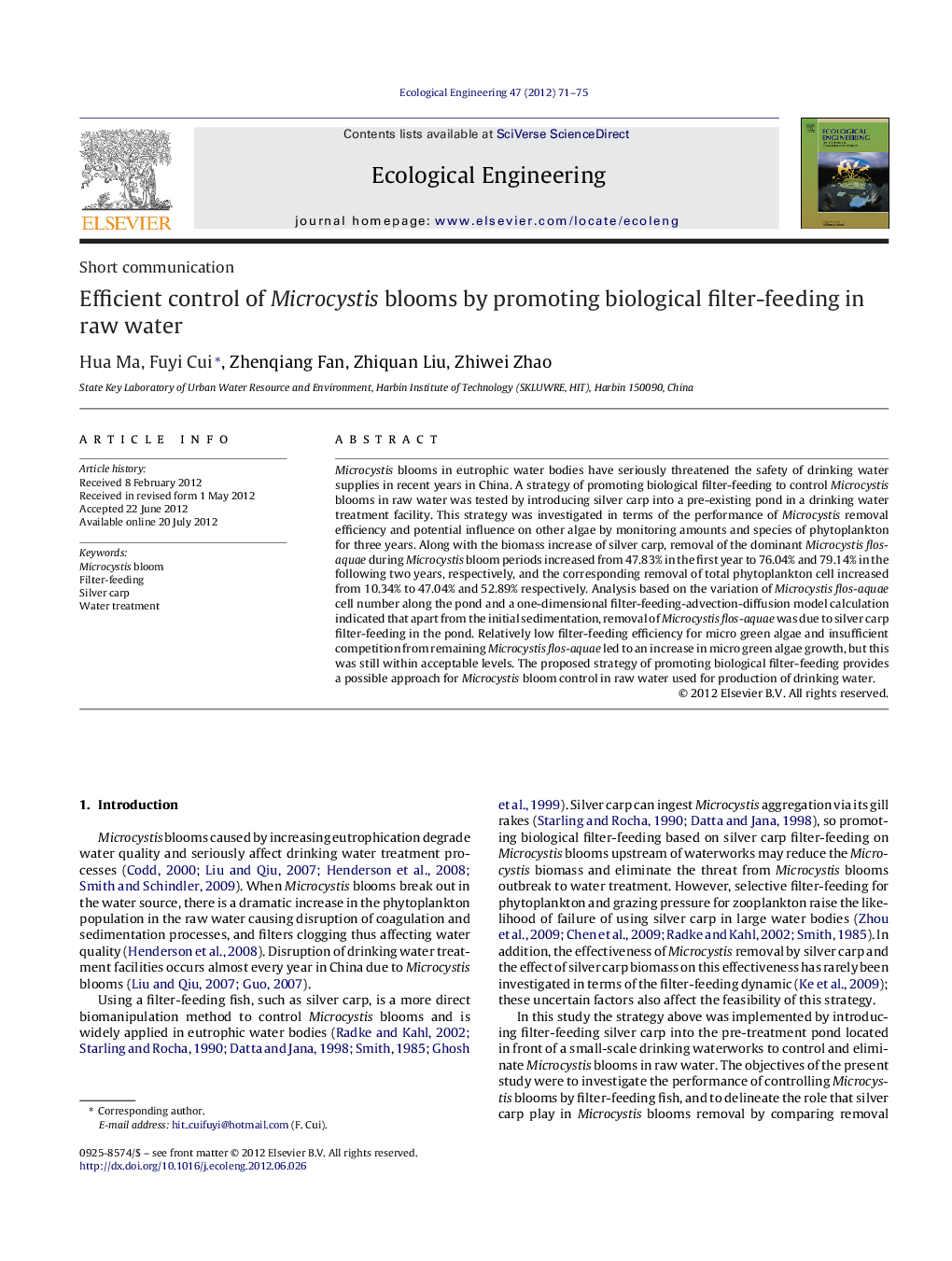| Article ID | Journal | Published Year | Pages | File Type |
|---|---|---|---|---|
| 4390000 | Ecological Engineering | 2012 | 5 Pages |
Abstract
Microcystis blooms in eutrophic water bodies have seriously threatened the safety of drinking water supplies in recent years in China. A strategy of promoting biological filter-feeding to control Microcystis blooms in raw water was tested by introducing silver carp into a pre-existing pond in a drinking water treatment facility. This strategy was investigated in terms of the performance of Microcystis removal efficiency and potential influence on other algae by monitoring amounts and species of phytoplankton for three years. Along with the biomass increase of silver carp, removal of the dominant Microcystis flos-aquae during Microcystis bloom periods increased from 47.83% in the first year to 76.04% and 79.14% in the following two years, respectively, and the corresponding removal of total phytoplankton cell increased from 10.34% to 47.04% and 52.89% respectively. Analysis based on the variation of Microcystis flos-aquae cell number along the pond and a one-dimensional filter-feeding-advection-diffusion model calculation indicated that apart from the initial sedimentation, removal of Microcystis flos-aquae was due to silver carp filter-feeding in the pond. Relatively low filter-feeding efficiency for micro green algae and insufficient competition from remaining Microcystis flos-aquae led to an increase in micro green algae growth, but this was still within acceptable levels. The proposed strategy of promoting biological filter-feeding provides a possible approach for Microcystis bloom control in raw water used for production of drinking water.
Related Topics
Life Sciences
Agricultural and Biological Sciences
Ecology, Evolution, Behavior and Systematics
Authors
Hua Ma, Fuyi Cui, Zhenqiang Fan, Zhiquan Liu, Zhiwei Zhao,
